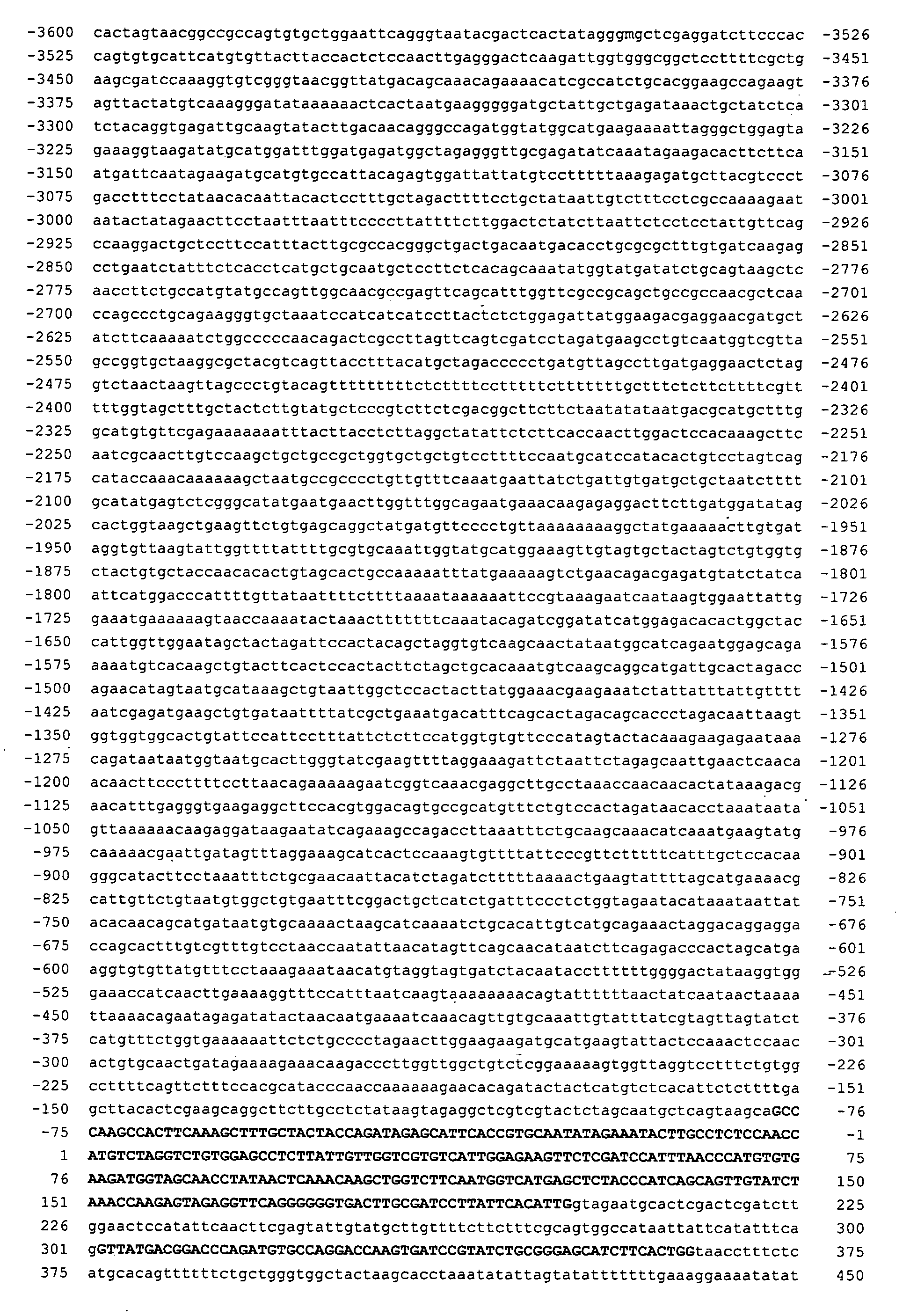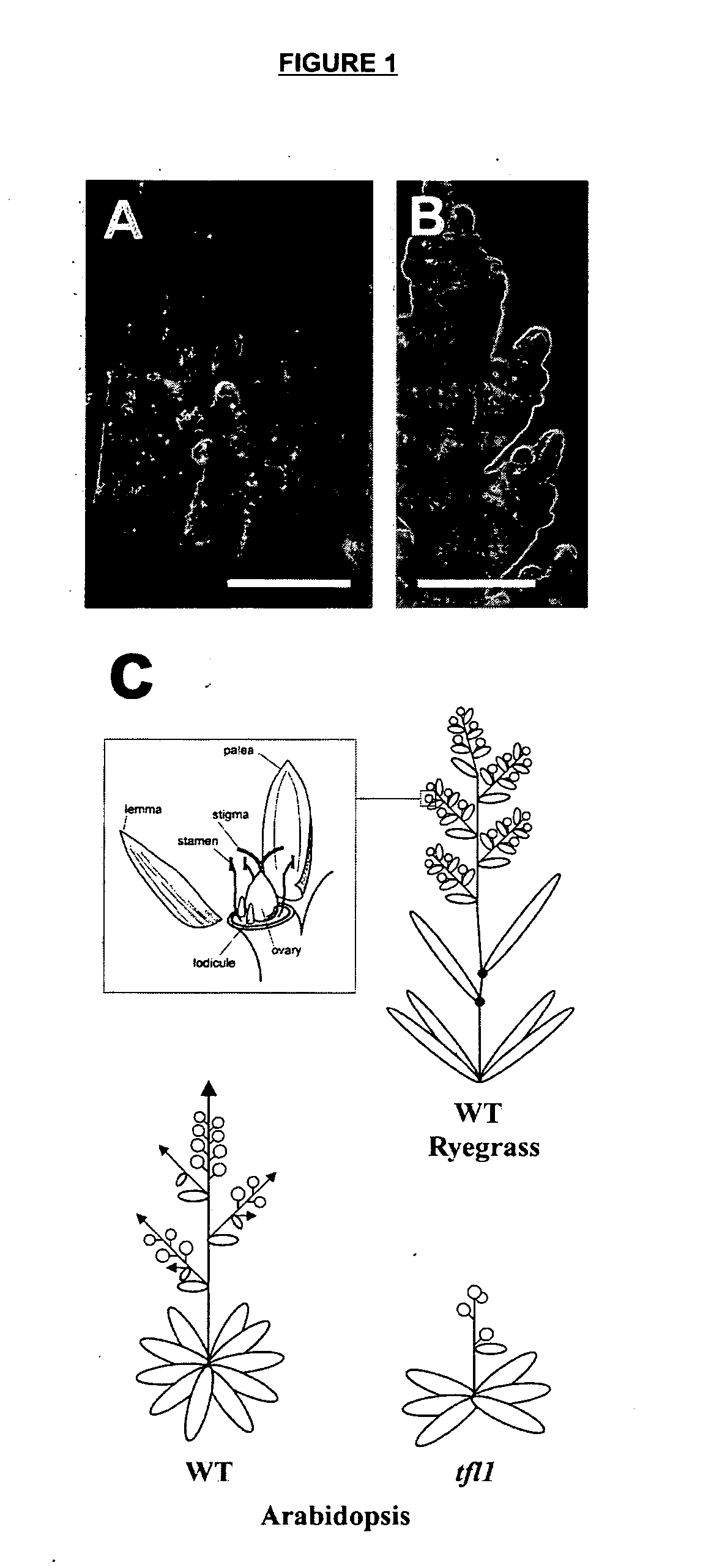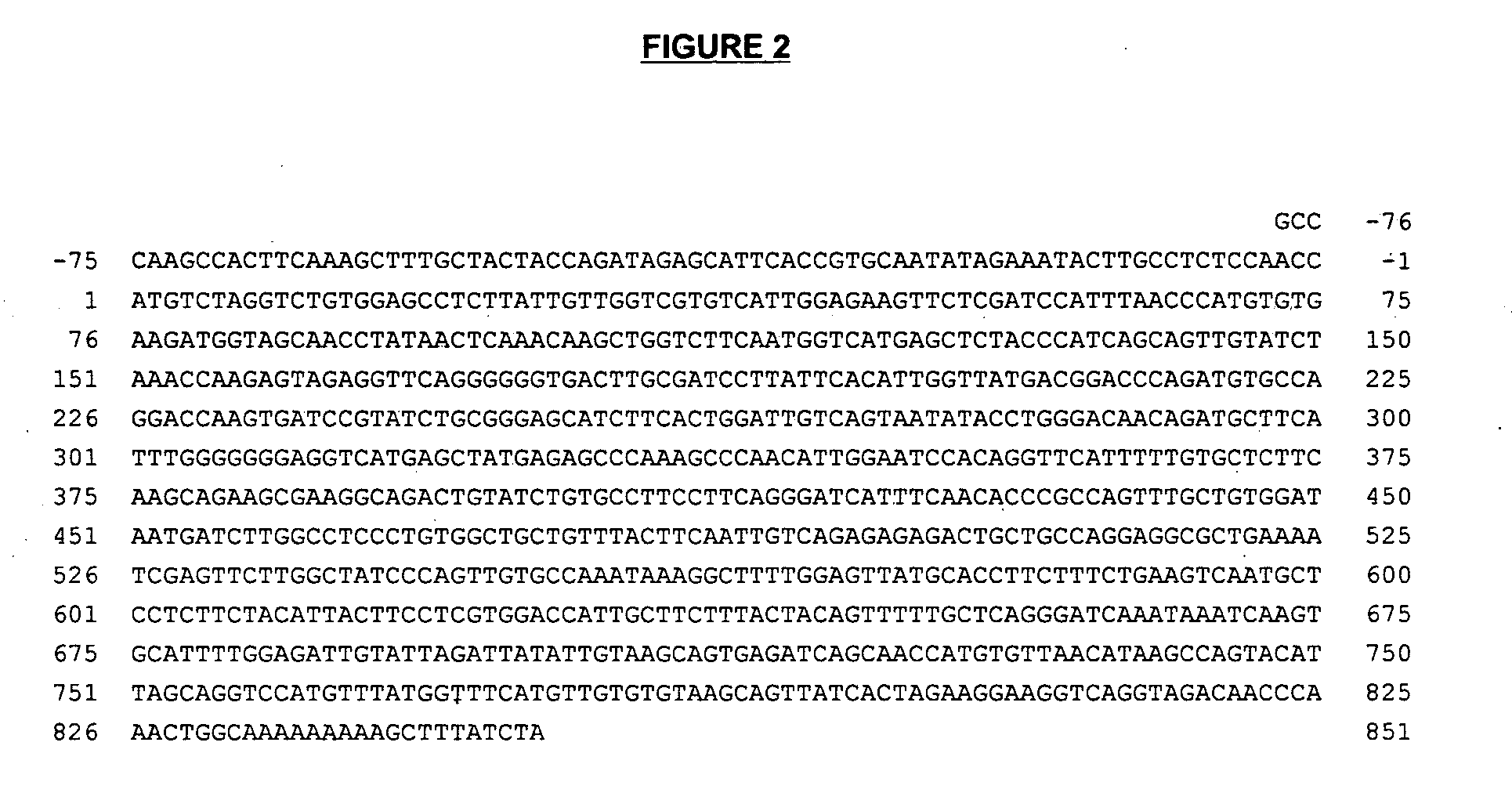Method of repressing flowering in a plant
a plant and flowering technology, applied in the field of repressing the flowering phase in plants, can solve the problems of reducing the feeding value of forage grasses, affecting the growth of plant flowers, so as to achieve the effect of repressing the vegetative-reproductive phase transition in plants
- Summary
- Abstract
- Description
- Claims
- Application Information
AI Technical Summary
Benefits of technology
Problems solved by technology
Method used
Image
Examples
Embodiment Construction
[0094] These and other aspects of the present invention will now be described by way of example only, in conjunction with the accompanying Figures, in which:
[0095]FIG. 1 illustrates the comparative morphology of perennial ryegrass and Arabidopsis. (A) The ryegrass vegetative apex is very compact with the SAM and the semicircular ridges that later will give rise to leaves and tillers. It is positioned on the basal crown and surrounded by developing leaves. Bar=1.0 mm. (B) The ryegrass inflorescence consists of spikelets alternately attached to the main axis (rachis). Each spikelet consists of three to 10 flowers. Bar=1.0 mm. (C) Schematic diagrams of ryegrass and Arabidopsis. During vegetative growth the SAM-of ryegrass and Arabidopsis produce very closely spaced leaves in a rosette. After the floral transition the SAM of both species elongate (bolt) and floral organs (circles) are produced along the main axis. In both plants secondary shoots arise from the axils of subtending leave...
PUM
| Property | Measurement | Unit |
|---|---|---|
| Fraction | aaaaa | aaaaa |
| Fraction | aaaaa | aaaaa |
| Fraction | aaaaa | aaaaa |
Abstract
Description
Claims
Application Information
 Login to View More
Login to View More - R&D
- Intellectual Property
- Life Sciences
- Materials
- Tech Scout
- Unparalleled Data Quality
- Higher Quality Content
- 60% Fewer Hallucinations
Browse by: Latest US Patents, China's latest patents, Technical Efficacy Thesaurus, Application Domain, Technology Topic, Popular Technical Reports.
© 2025 PatSnap. All rights reserved.Legal|Privacy policy|Modern Slavery Act Transparency Statement|Sitemap|About US| Contact US: help@patsnap.com



